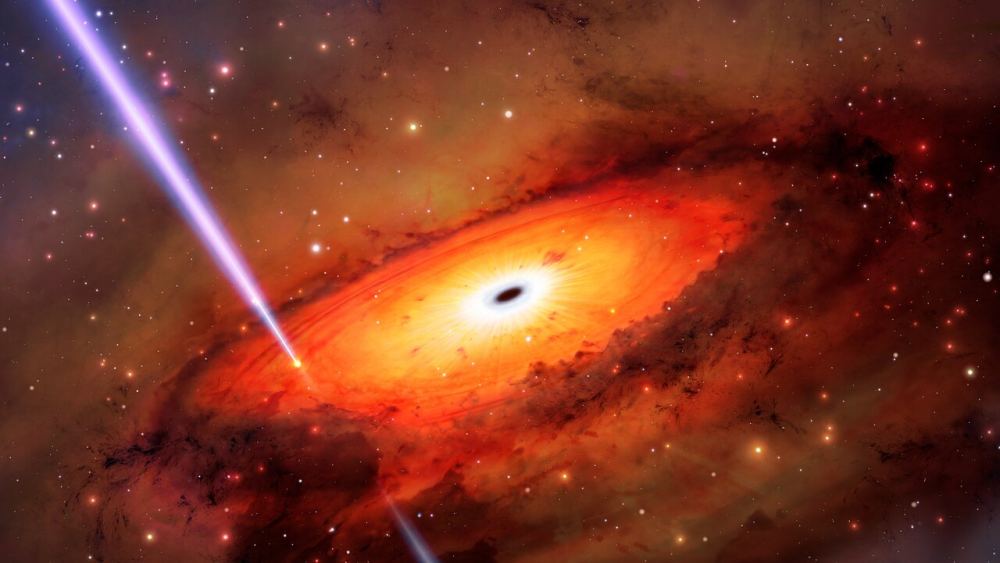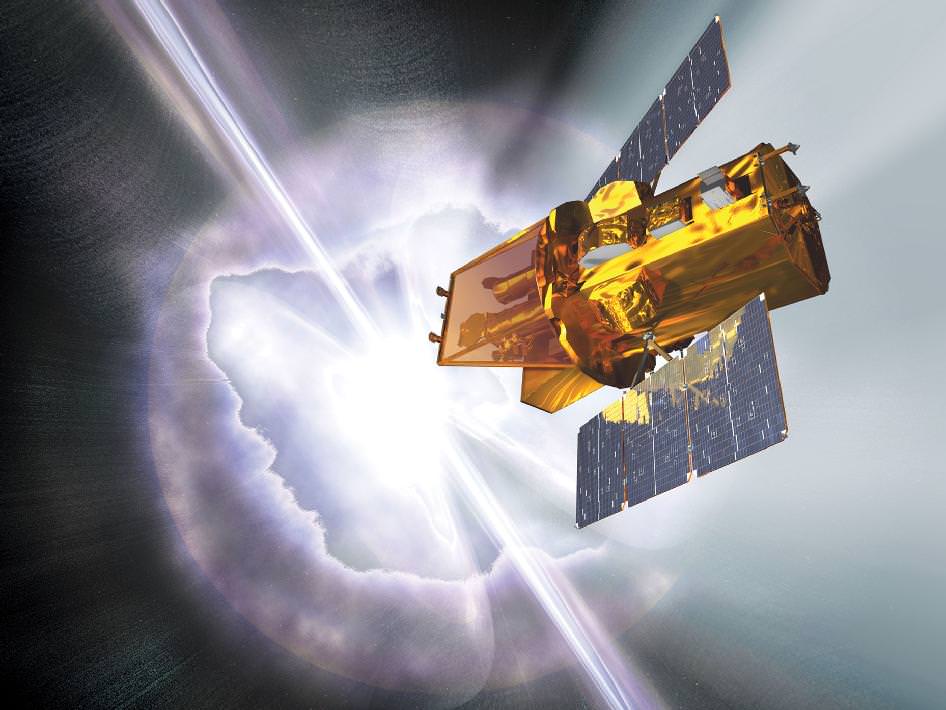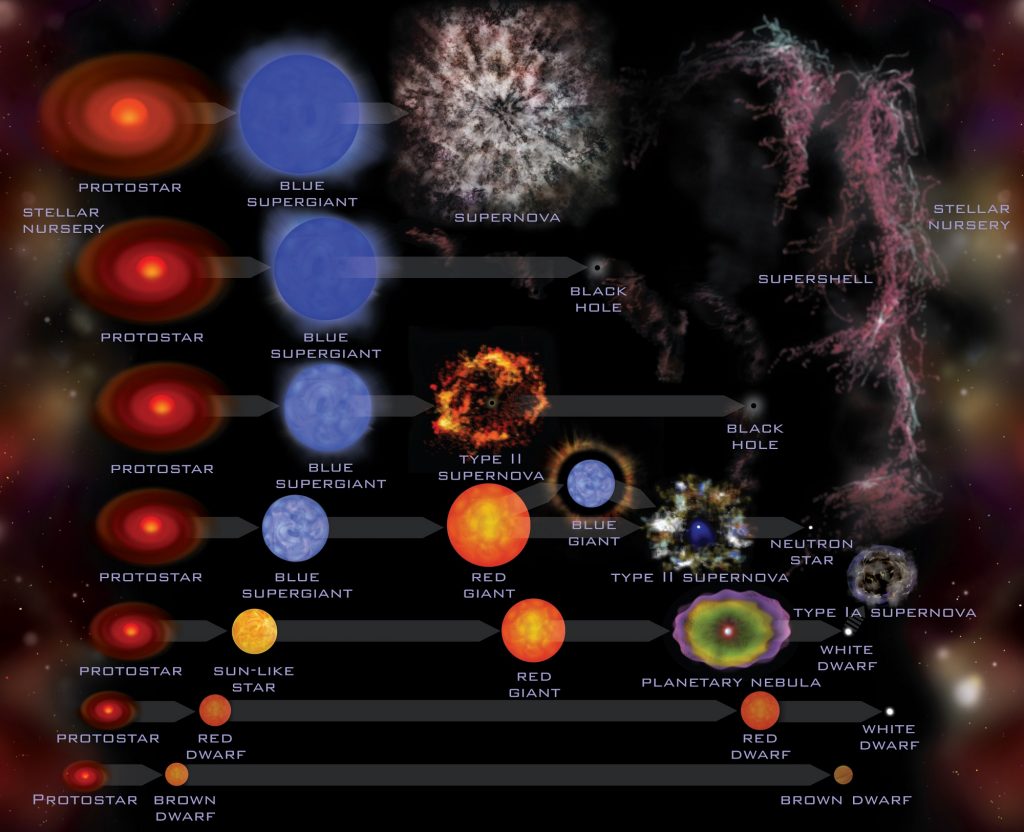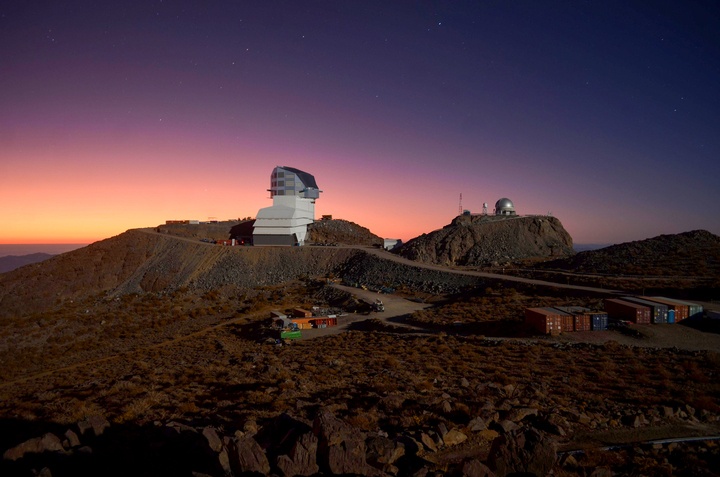If you’re an evil genius supervillain looking to freak out your enemy with a big messy space kablooie, here’s a novel way to do it. Smack a couple of ancient star remnants together right in front of your nemesis. The result will give you a gratifyingly huge, bright explosion plus a bonus gamma-ray burst visible across the Universe. And, it’ll scare everybody into doing your evil bidding.
Of course, to do this, you need to have massively weird powers. Those don’t exist outside the realm of comics. But, in the real universe, there ARE ways to do it. You just need those massive stellar objects crammed together in space. Then, they get a little too close, and—blam! a massive explosion visible across billions of light-years.

Astronomers studying a powerful gamma-ray burst (GRB) with the International Gemini Observatory may have observed a never-before-seen way to destroy a star. Credit: International Gemini Observatory/NOIRLab/NSF/AURA/M. Garlick/M. Zamani
GRB 191019A: the Star Destroyer
On October 19, 2019, astronomers zeroed in on the source of just such an event, called GRB 191019A. The first indication was a long-duration gamma-ray burst (GRB) that lasted about a minute. (That’s long in GRB terms, although there’s evidence of some lasting much longer. However, most are only a few seconds to a few microseconds long.) The Neil Gehrels Swift Observatory detected it right away. Astronomers spent months afterward looking at the fading afterglow of the GRB source. They used the International Gemini Observatory, along with the Nordic Optical Telescope, and the Hubble Space Telescope. The observations uncovered the stellar death scene in the crowded heart of a galaxy some 3 billion light-years away.

Artist’s conception of the SWIFT satellite in the act of capturing a gamma-ray burst. Credit: NASA
Observers described it as an almost demolition derby-like collision of stellar remnants and stars in the chaotic neighborhood of the galaxy’s central supermassive black hole. The source of the GRB flash lay just 100 light-years away from the heart of the galaxy. It turned out to be in very close proximity to the central supermassive black hole. “These new results show that stars can meet their demise in some of the densest regions of the Universe where they can be driven to collide,” said Andrew Levan, lead author of a paper about the GRB and its source. “This is exciting for understanding how stars die and for answering other questions, such as what unexpected sources might create gravitational waves that we could detect on Earth.”
Searching out Star Destroyers in Unusual Locations
What’s so unusual about this event is that it took place in a very old galaxy, according to Levan. “Our follow-up observation told us that rather than being a massive star collapsing, the burst was most likely caused by the merger of two compact objects,” said Levan. “By pinpointing its location to the center of a previously identified ancient galaxy, we had the first tantalizing evidence of a new pathway for stars to meet their demise.”

Diagram showing the evolution of stars under most circumstances. GRB 191019A reveals another way for stars or stellar remnants to be destroyed. Credit: NASA
An aging galaxy isn’t necessarily where you expect to find such massive fireworks. That’s because it’s long past its prime star-forming time. Most of the giant stars have already died as supernovae. However, its core could be a perfect place for the destruction of stellar remnants in collisions. The central regions of many ancient galaxies host large populations of stars. By some estimates, more than a million crowd into a region only a few light-years wide. There are also clouds of gas and dust, plus a population of stellar remnants—the black holes and neutron stars from the deaths of massive stars.
All of these objects swarm around the central supermassive black hole. It wouldn’t take much to bring two stellar objects (whether they’re nearby stars or remnants) together under the gravitational influence of the central black hole. One second two objects are swirling around with each other; the next they collide and produce a huge outburst that we see as a long-duration GRB. There’s also a gravitational wave burst, followed by a flash of light.
Looking for More GRBs
Astronomers haven’t seen a lot of these lengthy collisional GRBs in normal galaxies, but they probably happen more frequently than anybody thought. The galaxy cores where they occur are often hidden by gas and dust clouds, which mask the initial GRB flash and subsequent afterglow. Luckily, GRB 191019A happened more or less “in the clear”, which gave observers a chance to watch it for quite a long time.
GRB 191019A is the first observed event that involved stellar remnants in a crowded galaxy core environment. Levan and others would like to find more of them, now that they know what to look for. Their hope is to match a GRB detection with a corresponding gravitational-wave detection, which would reveal more about their true nature and confirm their origins, even in the murkiest of environments.

Rubin Observatory at twilight in May 2022. This observatory will be incredibly useful to study the afterglows of GRBs from the deaths of massive stars as well as as collisions in distant galaxies. Credit: Rubin Obs/NSF/AURA
Luckily the current observatories can play a role, along with upcoming facilities such as the Vera C. Rubin Observatory. “Studying gamma-ray bursts like these is a great example of how the field is really advanced by many facilities working together, from the detection of the GRB to the discoveries of afterglows and distances with telescopes like Gemini, through to detailed dissection of events with observations across the electromagnetic spectrum,” said Levan.





